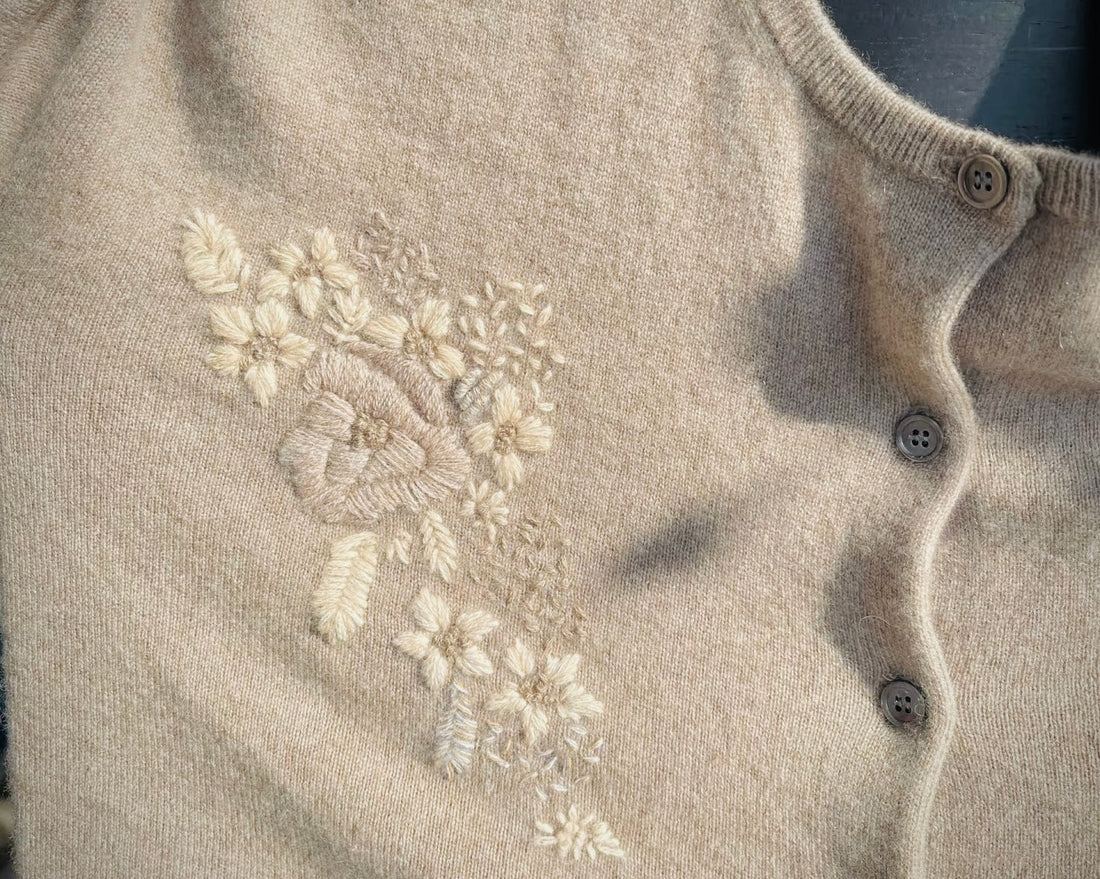
The Best Guide to Crewel Embroidery: History, Process, and Where to Find It Today
A Guide to the Timeless Art of Wool Thread Embellishment
Crewel embroidery isn’t your average decorative stitch. It’s historical, textured, and when done well—absolutely unforgettable. From museum-worthy wall hangings to high-end fashion runways, this ancient embroidery technique has made a modern comeback.
But what exactly is crewel embroidery, and why does it carry a reputation for depth, cost, and craftsmanship?
What Exactly Is Crewel Embroidery?
Crewel embroidery is a traditional form of surface embroidery that uses wool yarn—often fine and twisted—on a firm, woven fabric like linen or twill. Unlike other embroidery types that prioritize shine or flatness, crewel embroidery is all about texture, layering, and sculptural effect. It’s tactile. Dimensional. And yes—eye-catching.
When and Where Was Crewel Embroidery Invented?
This technique dates back over a thousand years, with roots in medieval England and Kashmir, India. In the West, it flourished during the Jacobean era (early 1600s), where it was used to adorn curtains, bedspreads, and clothing worn by the aristocracy. In India, crewel remained a decorative tradition tied to wool-rich regions, often involving intricate florals and tree-of-life motifs.
Where Is Crewel Embroidery Made Today?
Despite the rise of modern machine embroidery, authentic crewel work still thrives in a few special places:
- Kashmir, India remains the world center for traditional hand-stitched crewel, often using hand-spun wool and natural dyes.
- England maintains smaller artisanal studios focused on heritage techniques, especially for luxury home furnishings.
- China and Vietnam have adapted crewel embroidery into hybrid techniques, combining hand-guided machines with traditional stitches for faster production.
- Boutique ateliers in Europe and North America occasionally commission hand-done crewel for haute couture or limited-edition fashion capsules.

If you’re looking to source real crewel embroidery today, India’s Kashmir region is still the gold standard. For custom or high-end applications, connecting with specialty artisan collectives or bespoke embroidery studios is the best path.
What Kind of Fabric Is Best for Crewel Embroidery?
Because the wool thread is thicker than floss, the base fabric needs to be sturdy. That’s why you’ll often find crewel work on:
- Linen
- Cotton twill
- Heavy silk
- Canvas-like blends
A looser weave can cause sagging or puckering under the weight of the wool.
Is Crewel Embroidery Prone to Shedding?
Here’s the truth: wool naturally pills, especially if the yarn is low-quality or overly brushed. However, high-twist crewel wool is specifically spun to reduce fuzz. While some minor shedding may occur over time, well-done crewel embroidery won’t fall apart on you—especially if backed properly and cared for correctly.
What’s the Production Process Like?
Making crewel embroidery is not for the impatient. Here’s a simplified version of the production flow:
- Design sketching – The pattern is either drawn by hand or digitally printed onto tracing paper.
- Fabric preparation – The base cloth is stretched tightly on a hoop or frame.
- Pattern transfer – Designs are transferred using heat press, chalk, or ink.
- Stitching – Artisans use 7–10 common stitch types (e.g., stem, chain, satin) to create varied textures.
- Finishing touches – The work is backed, steamed, sometimes even hand-washed, then integrated into garments or decor.
Is It Easy to Produce?
In short: not really. Unlike machine embroidery, crewel is often hand-stitched or semi-hand-stitched, which means:
- Higher labor cost
- Longer production time
- Limited scalability
That’s also what gives it such soul.
Does It Cost More?
Yes. The cost factors include:
- Premium wool yarn
- Durable base fabrics
- Hand-stitching time (can take hours to days)
- Skilled artisans
Even with partial automation, crewel embroidery adds significant cost to a garment or home textile, often increasing retail price by 30–70% compared to standard embellishments.
How Is It Applied to Finished Garments?
Crewel embroidery is usually done on fabric panels before the garment is sewn. This ensures smooth stitching without distortions caused by seams. Once complete, the embroidered panel is:
- Carefully cut and integrated into garment construction
- Lined to protect the threadwork
- Sometimes reinforced with stabilizers or interlinings
What Should Be Considered During Production?
Key watch-outs include:
- Thread tension: Wool stretches—too tight, and the fabric warps.
- Humidity: Wool responds to moisture, so drying conditions matter.
- Thread quality: Low-grade yarn pills quickly.
- Friction zones: Embroidery on elbows or cuffs? Bad idea.
How Do You Care for Crewel Embroidery?
Crewel embroidery is durable—but delicate. To keep it looking pristine:
- Hand wash or dry clean only
- Avoid bleach or harsh detergents
- Lay flat to dry—no wringing or twisting
- Store flat or rolled to prevent creases on stitches
If you must wash it yourself, use cold water and a mild wool-safe detergent. Steaming rather than ironing is also recommended to avoid compressing the raised textures.
Crewel embroidery is more than just thread on fabric—it’s heritage, labor, and art, woven into every wooly curve. Whether you’re considering it for your next home textile collection or as a statement on your wardrobe, one thing’s certain: there’s nothing quite like it.
Want to Learn More?
If you’re fascinated by the textures, stories, and techniques behind fine textiles, there’s so much more to discover. Explore our guide on Mulberry silk—one of the most luxurious fibers in fashion history. Or, if you’re curious about textile maintenance, read our step-by-step tutorial on removing embroidery from clothes.
Want to experiment with your own designs? Try our custom embroidery and T-shirt design tool to bring your ideas to life—directly on your screen.


